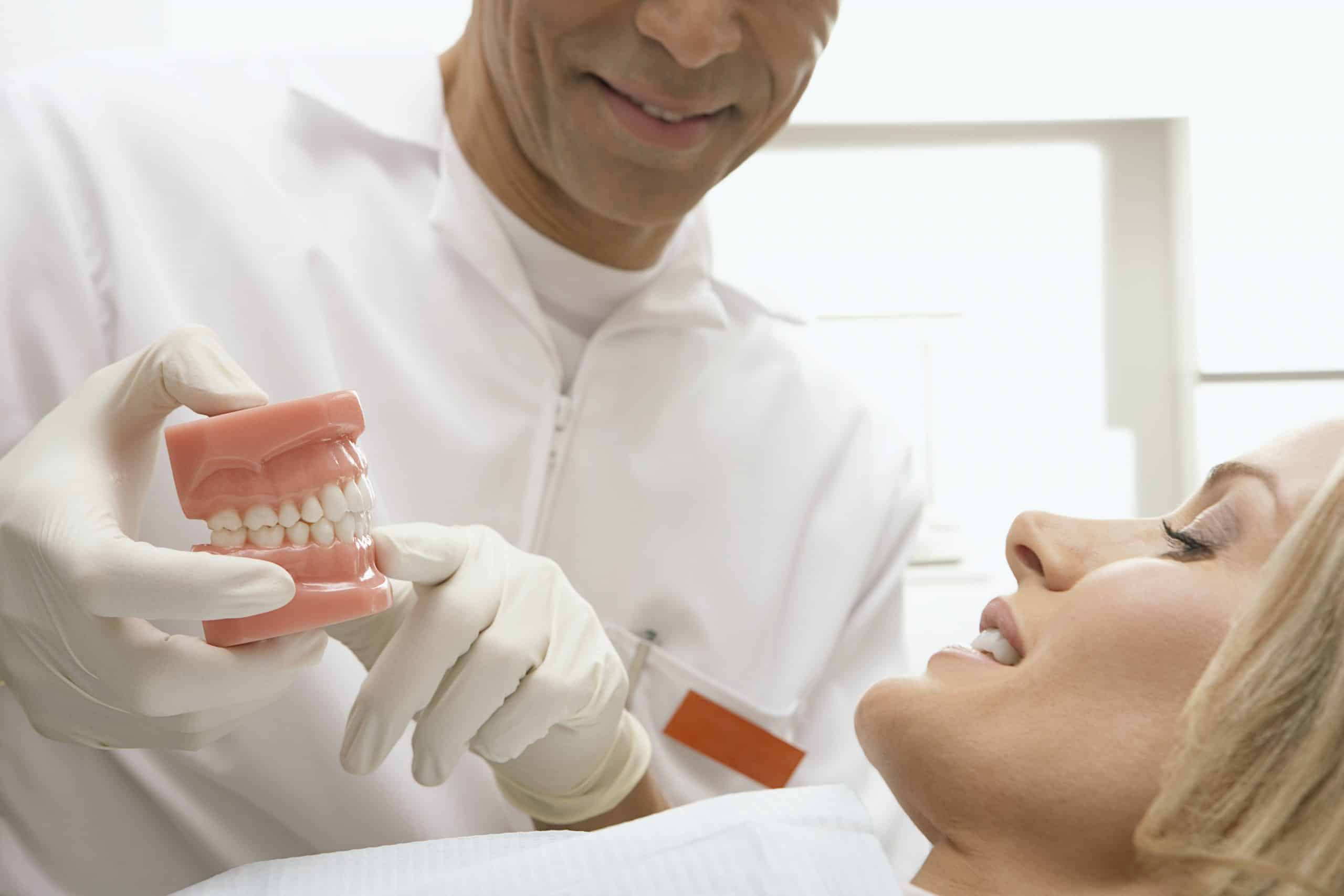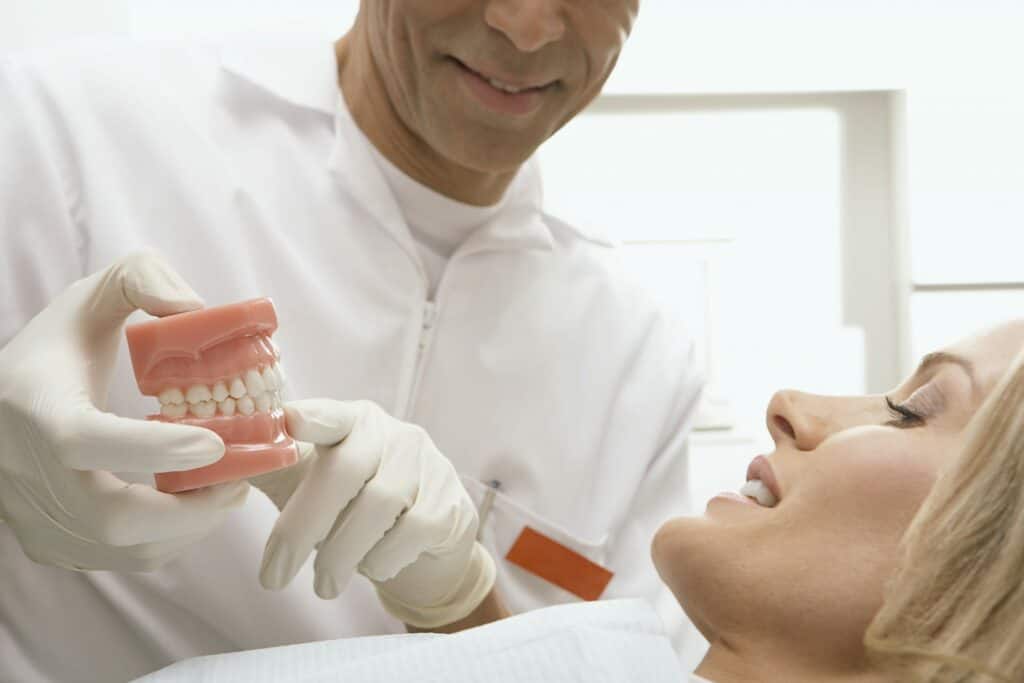Periodontal Disease Treatment And What To Expect

Periodontal disease, better known as gum disease, is a common condition that affects almost half of adults over the age of 30 in the United States. It can happen as the result of bacteria that begin to attack the gums, leaving your teeth and their support structure vulnerable.
While periodontal disease can cause serious problems for your teeth and gums, it is both preventable and treatable, especially in the early stages.
Find out more about periodontal disease treatment and what to expect during your visit with your dentist.
What Is Periodontal Disease?
Periodontal disease is a condition that affects the gums. At its earliest stages, the gums can become inflamed and start to bleed. More advanced stages of periodontal disease can start to affect the bone holding your teeth in place.
Periodontal disease is typically caused by a build-up of bacteria around your teeth and gums. This bacteria is known as plaque, a sticky film that hardens into tartar over time, affecting the health of your gums.
The mild form of periodontal disease is known as gingivitis, which can eventually become periodontitis if left untreated.
Periodontal disease is very common amongst adults, especially older adults, but effective oral healthcare can help keep it at bay. To take good care of your teeth, you should brush your teeth twice a day, floss, and use an antibacterial mouthwash. The best thing you can do is to learn to brush your teeth the proper way. Use a soft-bristled toothbrush so that you don’t damage your teeth and gums. Find a toothbrush with a multi-level head to help make sure you can reach all the hard-to-reach areas of your mouth. Avoiding eating or drinking too much sugar to help protect your teeth.
Pay close attention to the condition of your teeth. If you notice changes such as bleeding gums or tooth pain, schedule an appointment to see your dentist.
What Are the Symptoms of Periodontal Disease?
There are several signs of periodontal disease that could help you catch it and treat it early. They include:
- Swollen or red gums
- Bleeding gums
- Gums that bleed easily, such as when you’re brushing your teeth
- Bad breath
- Pain in teeth or gums
- Loose teeth
- Receding gums
- Gaps appearing in teeth
A regular visit to your dentist can help identify early signs of periodontal disease, but if you do spot symptoms like those listed above, be sure to make an appointment. Regular professional cleanings are one way you can keep your teeth in great condition and keep plaque at bay.
What Are the Symptoms of Periodontal Disease?
If left untreated, periodontal disease can cause serious damage to your teeth and gums. Once the bones and surrounding tissue become infected, the support that keeps your teeth in place can weaken, and could cause them to fall out, or require removal.
Periodontal disease can cause other health problems. There is ongoing research into the links between periodontal disease and other health conditions.
Early treatment can be effective for periodontal disease, which is why it’s important to get it checked out sooner rather than later.
Treatment and What to Expect?
There are a number of ways to treat periodontal disease. During a consultation with your dentist, a thorough assessment will be made and your treatment options will be outlined. Some of the treatments you could be offered include:
Professional Cleaning
A professional dental cleaning can help remove hard-to-reach plaque, as well as tartar that has built up on the teeth. During a professional clean, your teeth will be scaled and polished to help remove the build-up that can cause periodontal disease to worsen.
As part of your treatment, you could be prescribed antibiotics and antibacterial products such as gels or mouthwash to help combat gum infections.
Your dentist will also advise you on how to take better care of your teeth. Through effective oral hygiene, you can help stop the build-up of plaque that can lead to periodontal disease.
Surgery
If you’re dealing with a more advanced stage of periodontal disease, your dentist might recommend pocket reduction surgery. Pocket reduction surgery is a type of periodontal disease treatment that cleans out the gabs or pockets underneath the gums, helping to remove bacteria build-up. This is usually a last resort to help protect your teeth and gums from further damage.
LANAP (Laser-Assisted New Attachment Procedure)
LANAP is a modern type of treatment that uses laser technology to clean the deposits under the gumline. It is less invasive than pocket reduction surgery but can produce very effective results to help treat periodontal disease.
If periodontal disease has progressed to the bone, causing teeth to become loose or need removal, further treatments will be needed to salvage your teeth or replace them. Your dentist might recommend dental implants or dentures, which can help improve your smile by providing a natural-looking replacement for your teeth.
Periodontal Treatment with Rinaldi Dental Arts
At Rinaldi Dental Arts, we provide our patients with effective care and treatment against periodontal disease. Our modern dental practice provides a warm and welcoming environment to help put you at ease during your dental treatment.
Based in The Collection, Chevy Chase, our luxury dental office provides a range of treatments, including treatments to promote whole-body wellness, and those that can help to beautify your smile. We’re experienced professionals who can help remedy the signs of periodontal treatment to help you keep your teeth looking their best.
If you’re concerned that you’re showing signs of periodontal disease, get in touch with us today. Our dental practice knows the importance of your oral wellbeing, and we can help you with effective dental care. We also provide cosmetic dental treatments that will transform your smile.
Schedule an appointment with Rinaldi Dental Arts today or call to speak to a member of our team.
